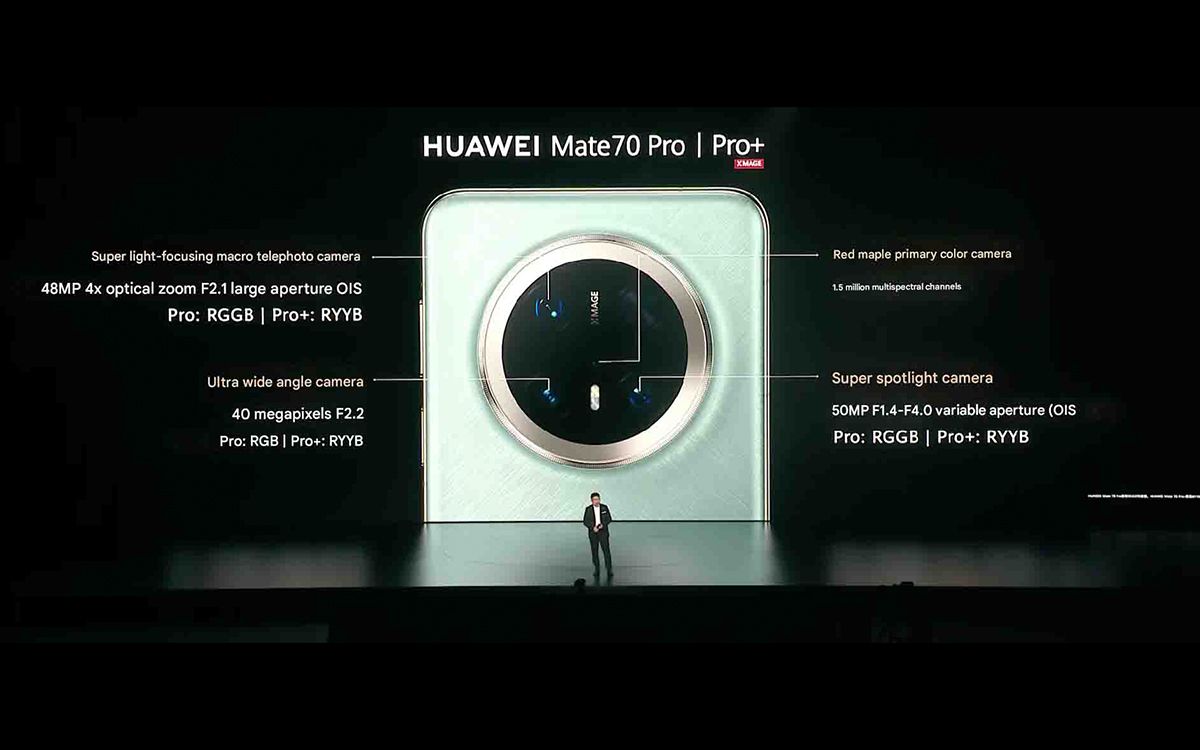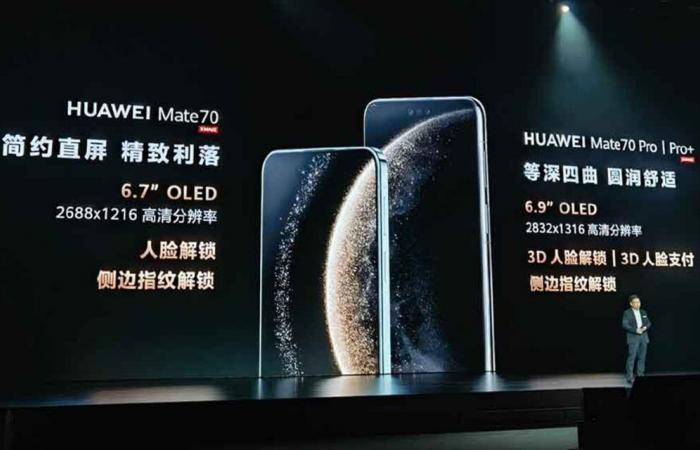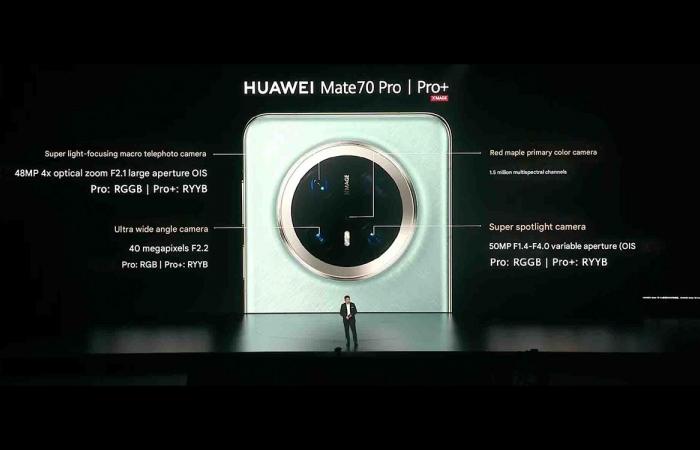Huawei has just unveiled the Mate 70 series, consisting of four models. This new smartphone focuses on photography, autonomy and the integration of artificial intelligence. This launch marks an important milestone for the brand.
With the Mate 70 series, Huawei continues its strategy of launching two annual ranges and succeeds the Mate 60, launched in 2023. The latter had already stood out with satellite calls, a first on a smartphone. The Mate 70 therefore regains this momentum with four distinct models : the Mate 70the Mate 70 Prothe Mate 70 Pro+ and the Mate 70 Ultimate Design. This launch reflects the brand’s ambitions in the Chinese market, where it seeks to strengthen its position despite international restrictions.
This series introduces a revisited design which is marked by a imposing rear photo module. The circular block, surrounded by a diamond-style textured ring, houses an advanced photo system. The latter includes a 50 MP main sensorand 48 MP telephoto lens and a ultra grand-angle de 40 MP. Huawei integrates its XMAGE technology to optimize images and offers features such as 4K video recording in night mode or variable aperture management.

The Mate 70 Pro offers an improved screen and a 5700 mAh battery
The Mate 70 Pro is equipped with a 6.9-inch LTPO OLED display with curved edges, with a variable refresh rate of 1 to 120 Hz. At the front, it offers three sensors for 3D facial recognition and aerial gestures. On the autonomy side, battery of 5700 mAh replaces that of 5000 mAh of the previous generation, with a 100W fast charging wired. The standard model, more accessible, offers a 6.7-inch flat screen with reduced borders for easier handling.
Huawei also introduces HarmonyOS NEXT, an improved version of its operating system. This brings new animations, a redesigned interface and a better connection with devices in the Huawei ecosystem. Artificial intelligence is at the heart of this release, with generative features for voice assistant, video editing and image creation. For now, the Mate 70s are on sale only in Chinawith no indication of an international launch at the moment.








